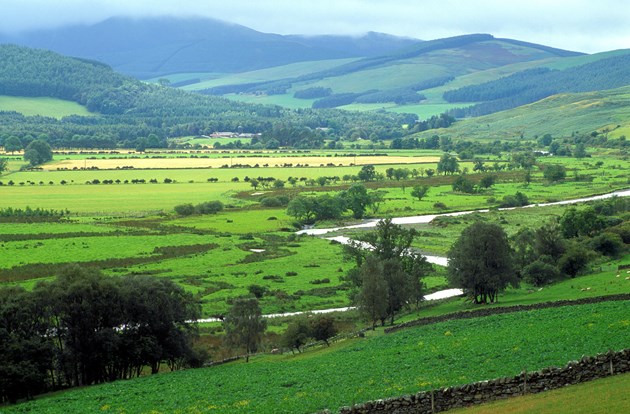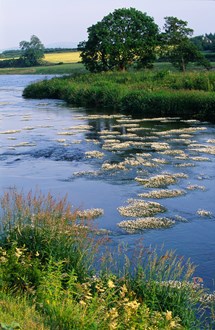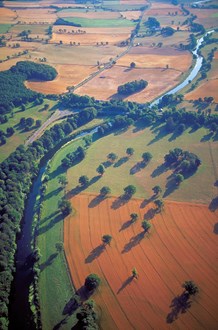07 October, 2020
First of its kind business project invests in nature’s future in Scottish Borders

A project with potential to significantly increase business investment in Scotland’s natural capital as part of our ‘green recovery’ from COVID-19, has launched in the Scottish Borders.
The pilot will kick off with work with environmental charity Tweed Forum on practical ways that business and other organisations can invest in nature and help tackle climate change.
A key focus for the Forum will be flood management – an important issue for many local people – and understanding the kind of investment that could benefit the community. The natural capital project aims to show how investing in nature can happen in ways that bring returns for business as well as for nature and communities, particularly at regional level.
Scotland’s natural capital is worth at least £196bn, supporting 240,000 jobs. Much of this value is generated by the country’s nature and rural landscapes. Growth sectors such as tourism, and food and drink are heavily dependent on a high-quality natural environment that can be placed at risk from the dual threat of climate change and biodiversity loss.
Mary Christie, NatureScot’s Natural Capital Manager, said:
“We need a strong economic recovery from the Covid-19 pandemic, but our recovery has to have a strong environmental component to safeguard us into the future. Climate change and biodiversity loss are a huge threat to our economy, which depends on natural resources like healthy soils and diverse landscapes. By investing in Scotland’s natural capital, we have a better chance of hitting net zero carbon targets, reversing biodiversity decline and building resilience.
“More and more organisations are investing in green finance, as businesses realise a healthy natural environment is essential for business. Nature can help improve our health, lower atmospheric carbon, reduce the risks of flooding and drought, improve air quality, and buffer us against pests, diseases and pathogens.”
Luke Comins, Director of Tweed Forum, added:
“We are delighted to be involved in this important project. As public funding for protecting and enhancing our natural assets gets tighter, we have increasingly been seeking to blend public with private finance to carry out our work in the Tweed catchment. Whilst we have some success with carbon and biodiversity offsets, we are keen to explore new relationships and business cases. We very much hope the lessons learnt here can be transferred to other areas and scaled up.”
ENDS
Pictures: Free use. Please credit pictures as indicated in captions.
Contact information
- Name
- NatureScot Media
- Telephone
- 0131 316 2655
- media@nature.scot
Notes to editors
Tweed Forum was formed in 1991 to “promote the sustainable use of the whole of the Tweed catchment through holistic and integrated management and planning”. In close partnership with our members, Tweed Forum staff work to protect, enhance and restore the rich natural, built and cultural heritage of the River Tweed and its tributaries. The Forum works at both the strategic level and the project level in order to achieve tangible benefits on the ground. From our inception as an informal liaison group, we have grown to become a leader in the field of integrated land and water management. For more information, see www.tweedforum.org
Tweed Forum has been appointed to work with the project. The Facilitating Local Natural Capital Investment Project is led by NatureScot with funding contributions from Scottish Government, Scottish Forestry and Scottish Land Commission. Consultants Environmental Finance, and partners Eftec, Countryscape and RSPB Scotland, will deliver the project.
The aim of the project is to discover practical ways to encourage private sources of finance and investment, potentially combined with public funding, to back nature-based solutions to aid the economy and the environment. This pilot will develop and test an approach which has potential for wider use by a range of regional partnerships.
Natural capital is the stock of Scotland’s plants, wildlife, air, water, and land providing benefits to the people and businesses across the country. Assessing the monetary value of natural capital is one way to show how nature provides many benefits to everyone in their everyday lives. Using the natural capital approach to understand nature’s wider benefits can in turn help businesses and other organisations make more informed decisions based on a broader picture which includes the environment.
NatureScot is Scotland's nature agency. We work to enhance our natural environment in Scotland and inspire everyone to care more about it. Our priority is a nature-rich future for Scotland and an effective response to the climate emergency. For more information, visit our website at www.nature.scot or follow us on X at https://x.com/NatureScot
’S e NatureScot buidheann nàdair na h-Alba. Bidh sinn a’ neartachadh àrainneachd na h-Alba agus a’ brosnachadh dhaoine gu barrachd suim a chur ann an nàdar. Tha e mar phrìomhachas againn gum bi nàdar na h-Alba beairteach agus gun dèilig sinn gu h-èifeachdach le èiginn na gnàth-shìde. Tha an tuilleadh fiosrachaidh aig www.nature.scot no air X aig https://x.com/NatureScot



